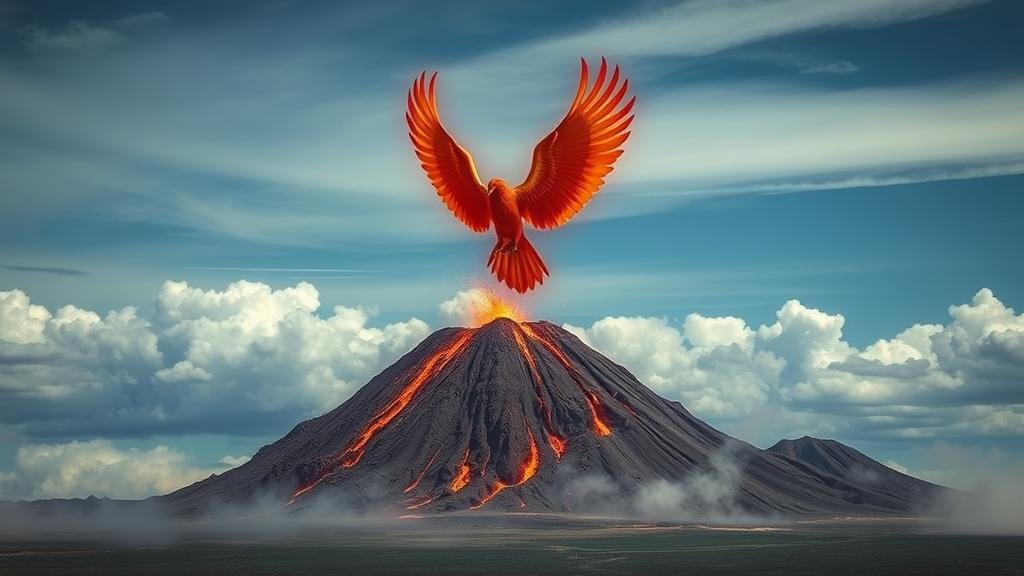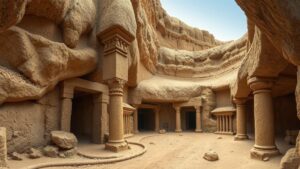Searching for the “City of the Phoenix,” a settlement said to rise from volcanic ashes in Indonesia.
Searching for the City of the Phoenix
The City of the Phoenix, also known as Kota Phoenix, is a mythical settlement believed to rise from the volcanic ashes in Indonesia. This legend intertwines with the rich tapestry of Indonesias volcanic landscape, where eruptions have both devastated and revitalized communities. The search for this enigmatic city offers insights not just into Indonesias geological phenomena, but also into its cultural narratives and historical contexts.
Historical Context of the Legend
The lore surrounding the City of the Phoenix dates back many centuries. According to local myths, the city is said to emerge from ashes following a catastrophic volcanic eruption, symbolizing renewal and resilience. Indonesia, an archipelago that houses over 130 active volcanoes, serves as the perfect backdrop for such narratives. One prominent example is the eruption of Mount Tambora in 1815, which had global climate impacts and led to the Year Without a Summer in 1816.
- Mount Merapi, known for its frequent eruptions, also contributes to local myths about rebirth.
- The Sutoro tribe of Central Java believes the City of the Phoenix can provide spiritual guidance and nourishment.
Physical Characteristics of the Region
The search for the City of the Phoenix is often focused around regions heavily influenced by volcanic activity, particularly in the islands of Java and Sumatra. fertile surroundings generated by volcanic soil offer some of the richest agricultural land, making them historically significant for settlements. The areas are dotted with remnants of ancient cities that are believed to be closely linked with the Phoenix story, such as:
- Yogyakarta, often referred to as the cultural heart of Java.
- Borobudur, the world’s largest Buddhist temple, which illustrates the historical synergy between nature and culture.
Scientific Explorations and Archaeological Findings
Scientific explorations in these volcanic areas have led to discoveries that support theories of past civilizations thriving and then being destroyed by eruptions. For example, archaeological excavations near Mount Merapi have uncovered remnants of settlements buried over centuries. Research has shown that volcanic eruptions periodically reshape the terrestrial landscape, creating fertile grounds suitable for agriculture while at the same time posing risks to existing populations.
Geochemical analysis reveals that areas affected by those eruptions have managed to regenerate over time, resembling a cycle of death and rebirth similar to the myth of the Phoenix. Archivists and historians are collaborating to document oral traditions and folklore surrounding these events. This multidisciplinary approach combines geology, anthropology, and history, enhancing our understanding of the City of the Phoenix’s significance.
Modern Implications
The myth of the City of the Phoenix extends beyond mere legend; it often serves as a metaphor for resilience in the face of adversity. As Indonesia continues to navigate the challenges posed by its geological instability, the phoenix symbolism has been embraced by local communities. It exemplifies their tenacity to rebuild and thrive, as seen in recovery efforts after natural disasters, such as the 2010 eruption of Mount Merapi.
- Reconstruction efforts have integrated community input, preserving cultural heritage while enhancing resilience.
- Local governments have implemented disaster preparedness strategies that draw on the lessons learned from previous eruptions.
Conclusion: The Ongoing Quest
The search for the City of the Phoenix stands as a testament to human curiosity and the desire to locate roots within our cultural narratives. Whether as a physical settlement or a metaphorical representation of hope and renewal, the story of the City of the Phoenix continues to captivate researchers, historians, and adventurers alike.
For those interested in exploring the rich culture and history surrounding Indonesias volcanoes, consider delving into local legends, participating in community festivals, or visiting volcanic regions that share this extraordinary narrative. legend of the City of the Phoenix teaches us that from devastation can come the opportunity for renewal–a lesson as valuable today as it was centuries ago.



